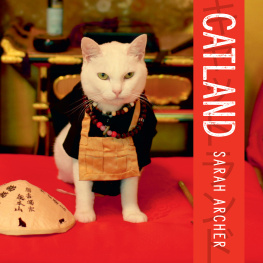Table of Contents
Guide
Page List


CATLAND

The Soft Power of Cat Culture in Japan
SARAH ARCHER

Copyright 2020 by Sarah Archer
With illustration by Sunny Eckerle and photography by Giovanni Piliarvu, Lee Chapman, and Rie Yamamoto
All rights reserved
For information about permission to reproduce selections from this book, write to Permissions, The Countryman Press, 500 Fifth Avenue, New York, NY 10110
For information about special discounts for bulk purchases, please contact W. W. Norton Special Sales at specialsales@wwnorton.com or 800-233-4830
Cover design by Jared Oriel
Front cover photo by Rie Yamamoto
Back cover image Heritage Images/Getty Image
Book design by Faceout Studio, Paul Nielsen
Production manager: Devon Zahn
The Library of Congress has cataloged the printed edition as follows:
Names: Archer, Sarah, author.
Title: Catland : the soft power of cat culture in Japan / Sarah Archer.
Description: New York, NY : The Countryman Press, [2020] | Includes bibliographical references and index.
Identifiers: LCCN 2019059883 | ISBN 9781682684733 (hardcover) | ISBN 9781682684740 (epub)
Subjects: LCSH: CatsJapanHistory. | JapanSocial life and customs.
Classification: LCC SF447 .A726 2020 | DDC 636.800952dc23
LC record available at https://lccn.loc.gov/2019059883
The Countryman Press
www.countrymanpress.com
A division of W. W. Norton & Company, Inc.
500 Fifth Avenue, New York, NY 10110
www.wwnorton.com
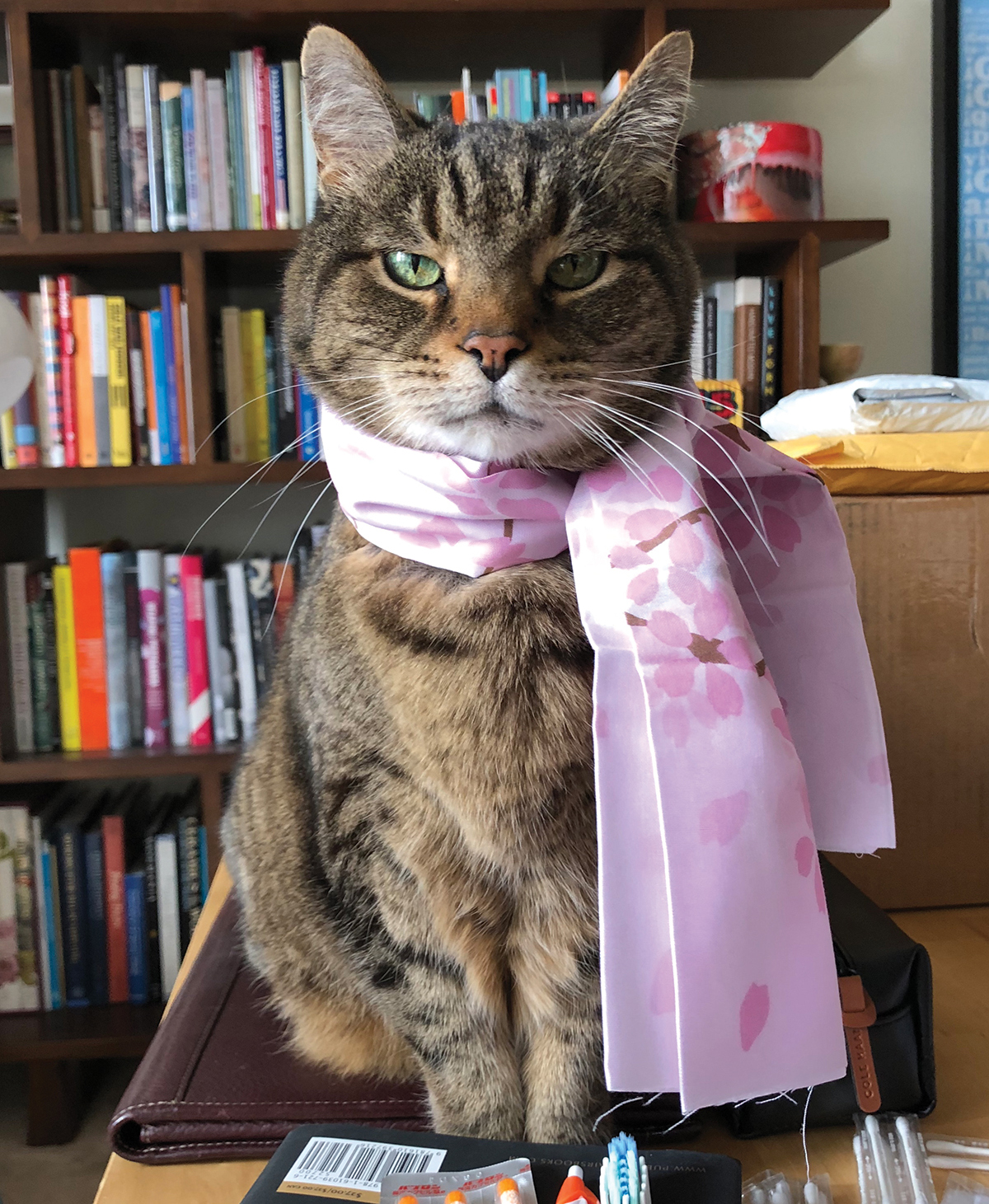
For Mr. K, who brought me into the fold.
CONTENTS

Imagine youre reading the news, and you come across an article about a new product or service that caters to cats. Maybe it strikes you as unusually thoughtful, or it looks exceptionally well-crafted. Perhaps it appears to have been undertaken with a seriousness of purpose and attention to detail that would rival that of any human-centered endeavorand this seriousness, in and of itself, is irresistibly endearing. Do you have any doubt where this hypothetical cat product or service comes from? You do not: its from Japan.
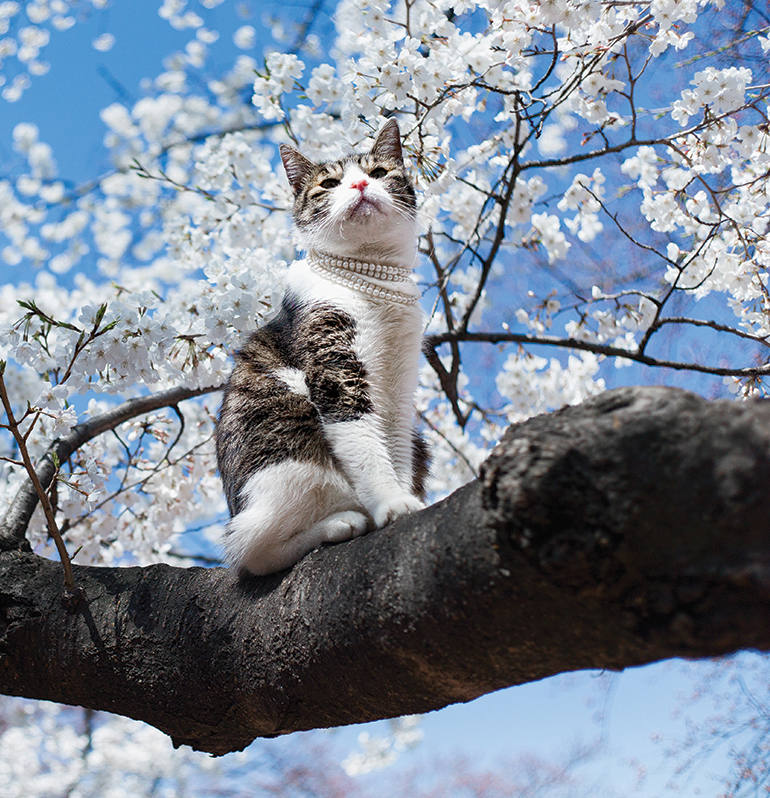
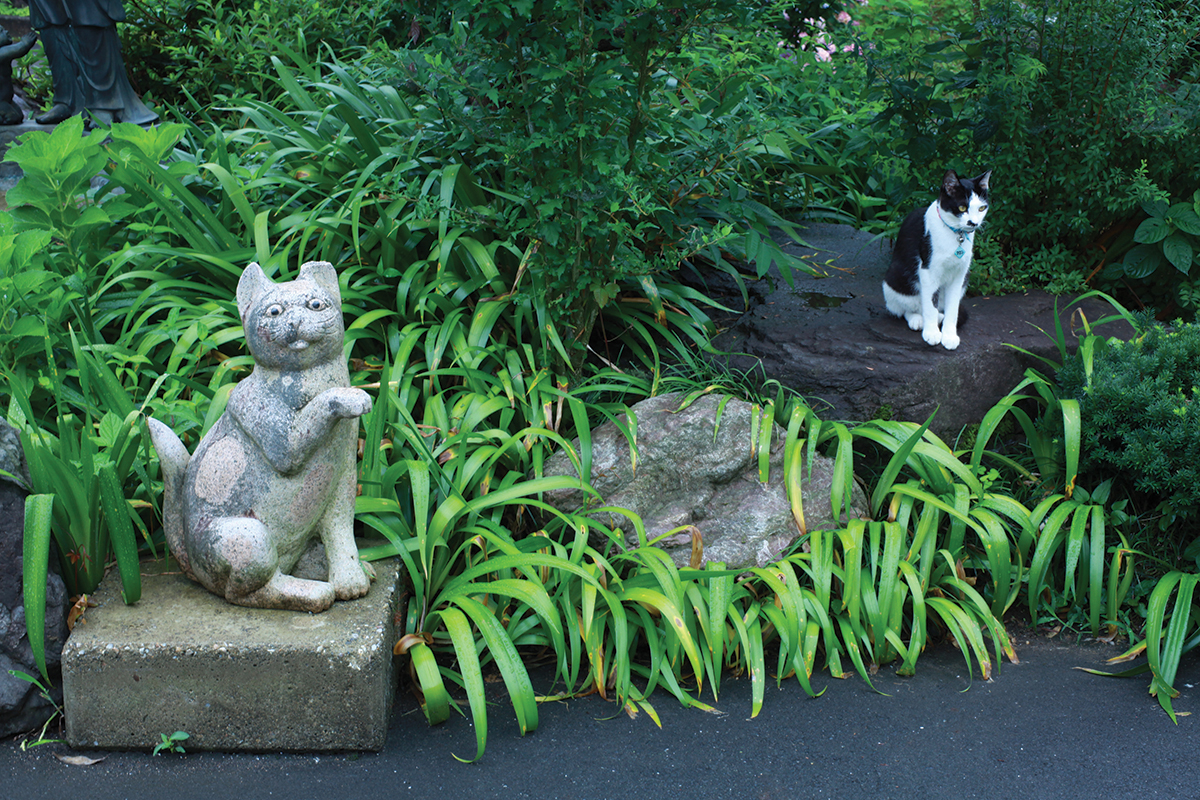
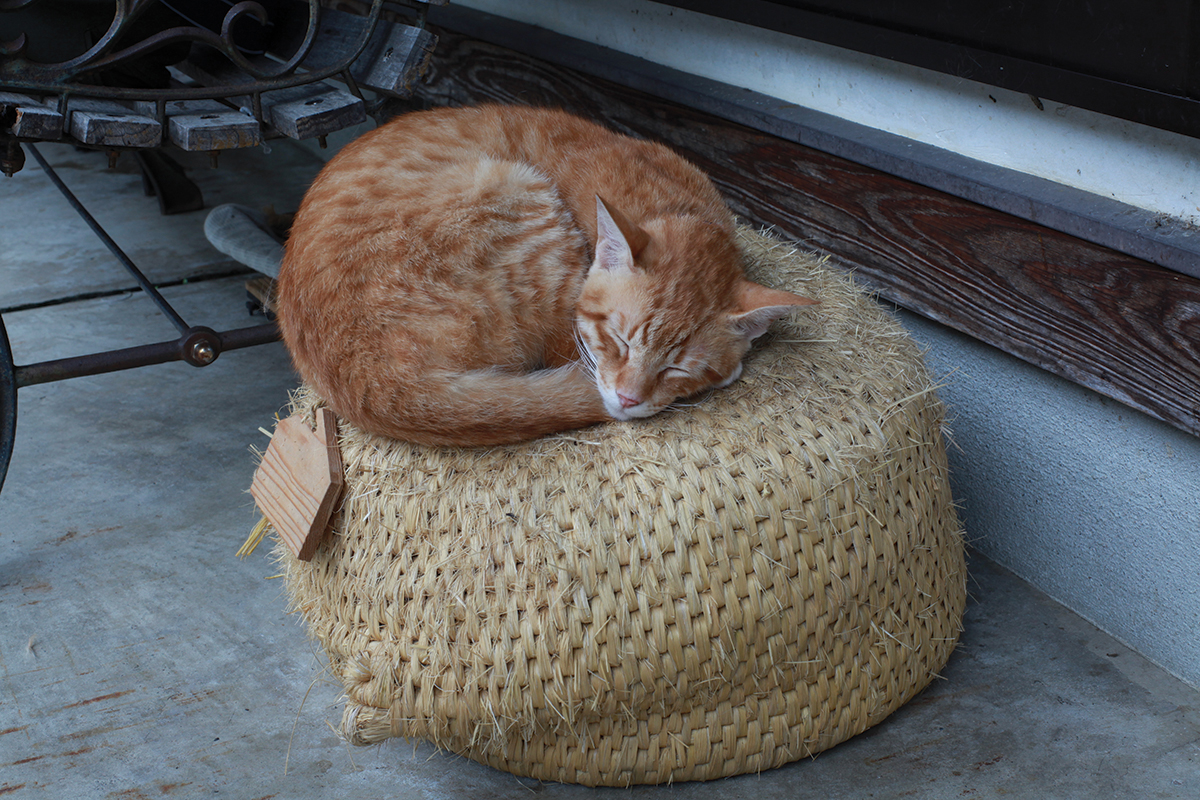
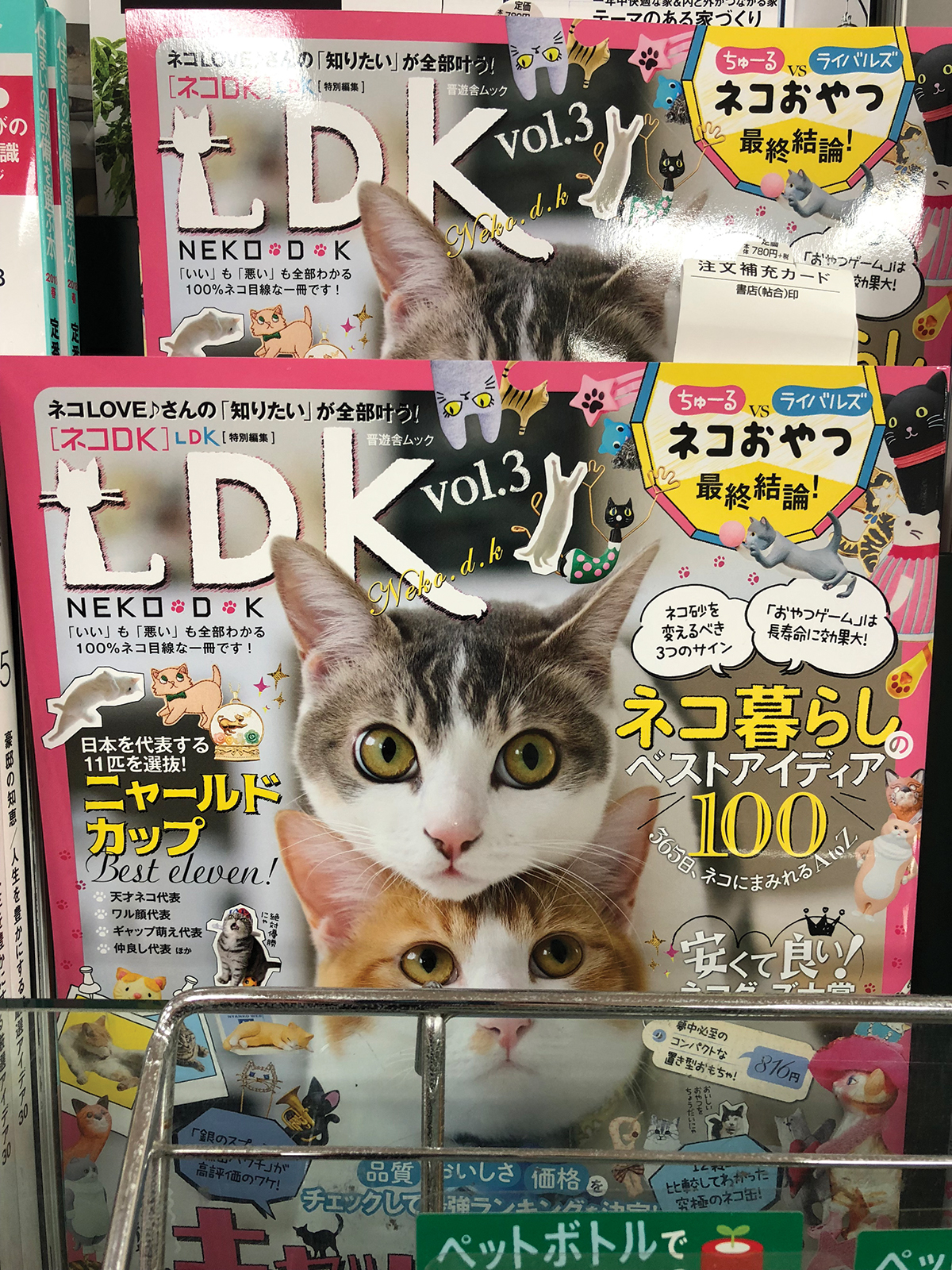
You know it, and so does Google: start typing Why do the Japanese love... or Why does Japan love... and youll find that cats are invariably among the top one or two suggested search terms. Cats and cat imagery are woven into the fabric of daily life in Japan to an extraordinary degree. They have cat cafs, cat hotels, cat shrines, cat islands, cat-themed bookshops and stationery stores, a Hello Kitty theme park, and a famous cat tailor (that is, a person who makes clothes for cats, not the other way around). And in countless restaurants and shop windows throughout Japan, youll find bright-eyed ceramic cat figurines with one paw raised, toe-side out, welcoming you inside. The maneki neko , or beckoning cat, has been a fixture of the Japanese landscape since at least the turn of the 20th century.
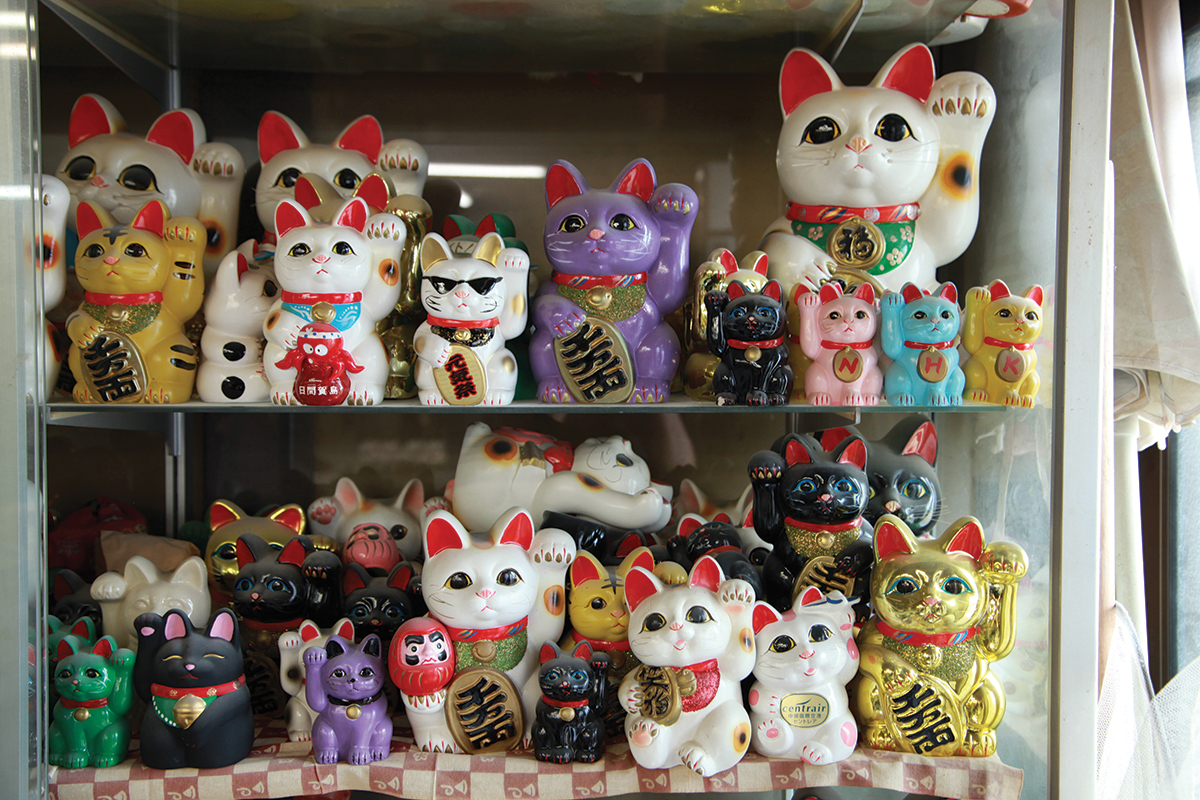
An array of maneki neko figurines at the Baigetsu Tomimoto Doll Factory, Inc., in Tokonome.
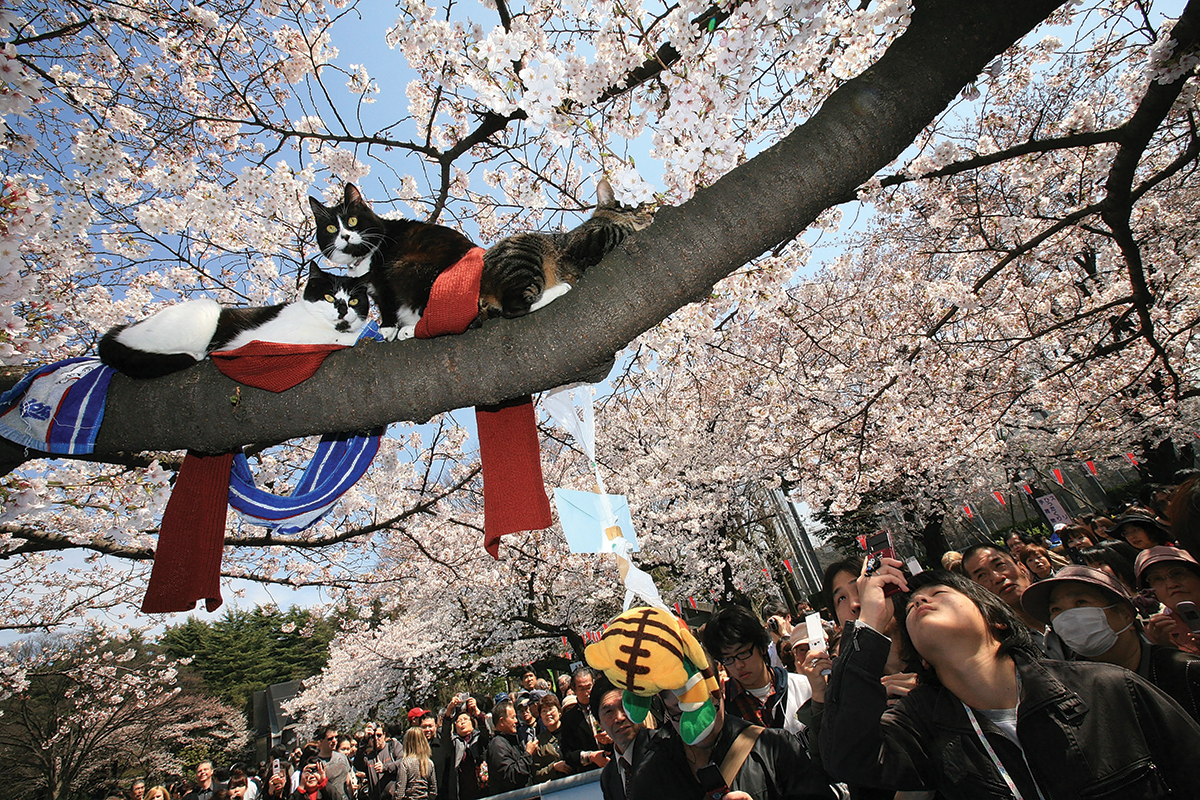
But arent there cats and cat people everywhere? When it comes to seaside communities where cats patrol the coastline, watching for birds and scouting for treats, Japans famed cat islands are not alone. Ceyda Toruns wonderful 2016 documentary Kedi (the Turkish word for cat) explores the complex web of human-feline interaction inIstanbul, where caf owners, shopkeepers, fishermen, and veterinarians all take part in an informal cat support system. The cats, in turn, seem to keep rodents at bay, and charm locals and tourists as only cats can. Any city that has a temperate climate, access to abandoned or unguarded snacks, sunny rooftops, and fresh fish is bound to become a Catland sooner or later.
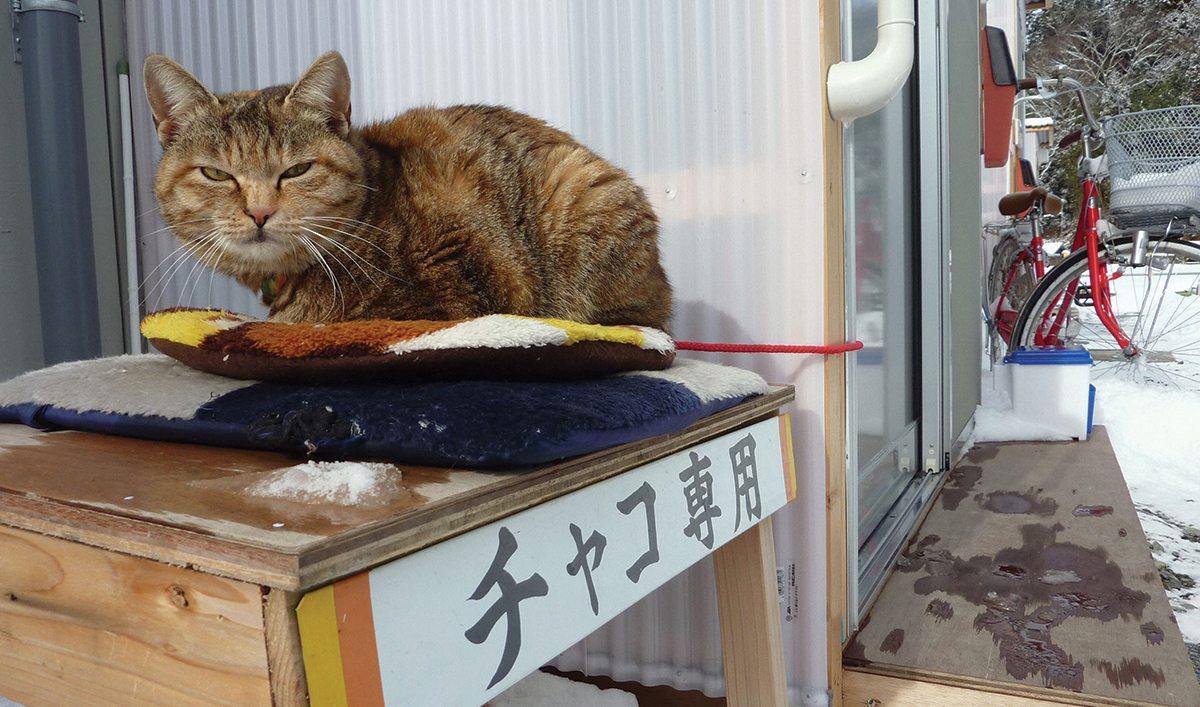
A cat named Chako sits on a pedestal with a sign reading: SOLELY FOR CHAKO, beside a temporary housing unit in Minamisanriku, Miyagi Prefecture, for people hit by the March 2011 earthquake and tsunami (photo taken February 2, 2012).

Adoptable residents at the Black Cat Caf in Himeji in 2014.
But lovely as it sounds, I didnt grow up with a Turkish cat character on my elementary school pencil case, and chances are, neither did you. The reason that those of us who live outside of Japan are apt to see it through a cat-shaped lens is because we encounter Japanese cat imagery starting in childhood. Japan gave the world Hello Kitty, Doraemon, YouTube star Maru, and the Cat Bus, a character from Hayao Miyazakis film My Neighbor Totoro , among others. The Cat Bus is exactly what it sounds like: a grinning orange tabby whose body is fitted with cozy, fur-covered seats. Hello Kitty alone is the second highest-grossing franchise ever, with $80 billion in sales since she premiered in 1975.
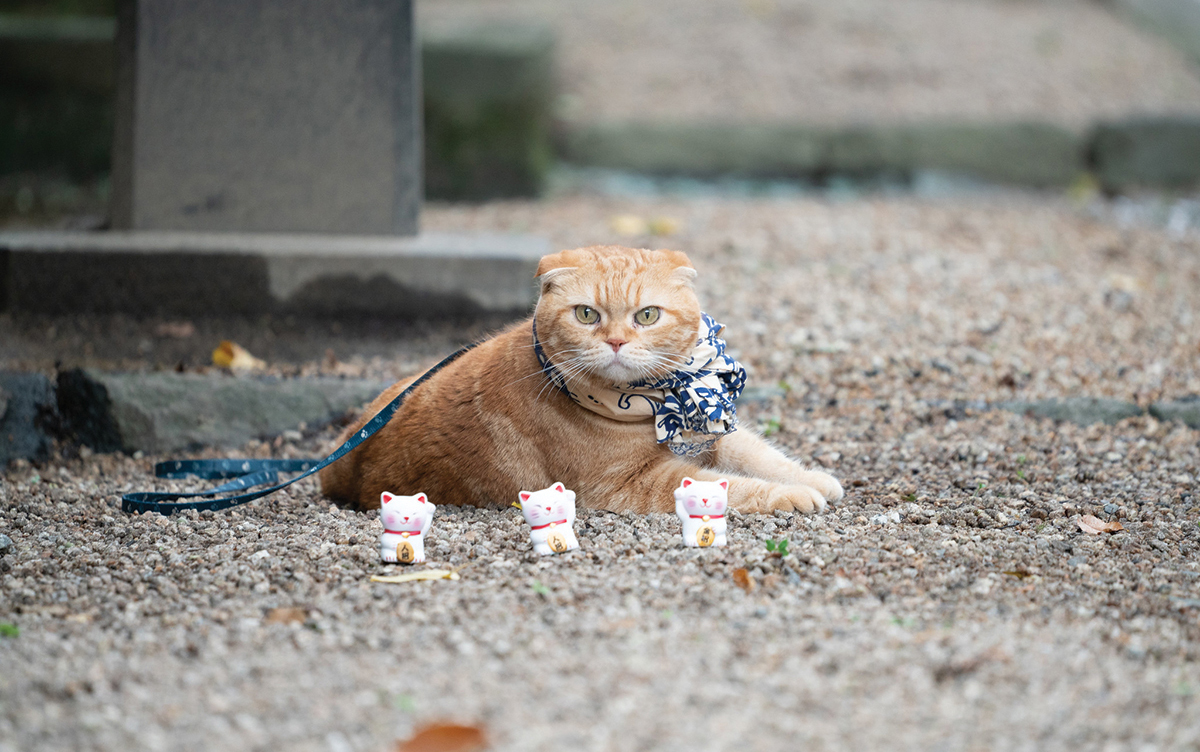

Keio Tama-Center Stationmaster Manabu Shimokawa and Hello Kitty during her one-day stint as a stationmaster in Tokyo in 2014, celebrating her 40th anniversary.
Inside Japan, its even better. TV commercials for the travel company Jalan have featured a pair of kimono-clad cats that travel the country together with tiny suitcases, and a bespectacled cat sporting a necktie who presents a fish-shaped business card to colleagues while on a work trip. In another commercial, a larger-than-life cat appears out of nowhere on a subway platform when a commuter starts chewing Fits Link gum, proceeding to carry the man to work through Tokyos morning rush hour. On the train, the man lies on the cats back and makes snow angels in its dense fur, delighted. Tellingly, a Google search for cat businessman commercial Japan yields multiple excellent results.
Next page
